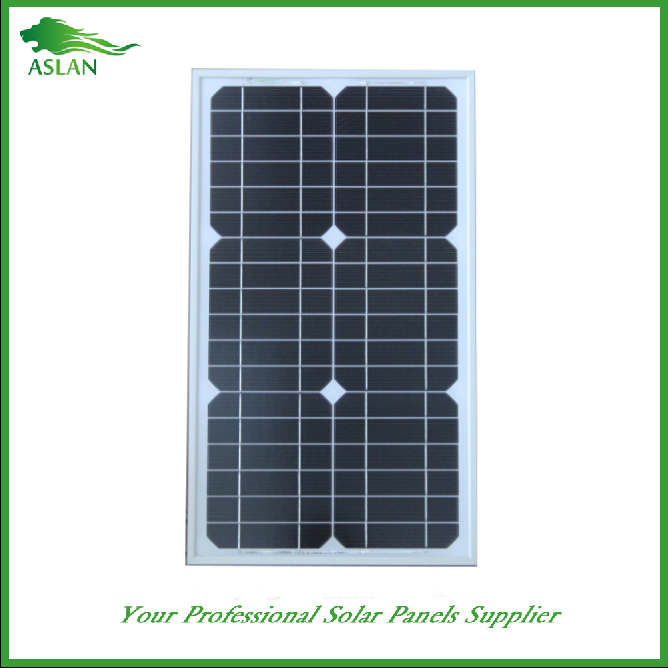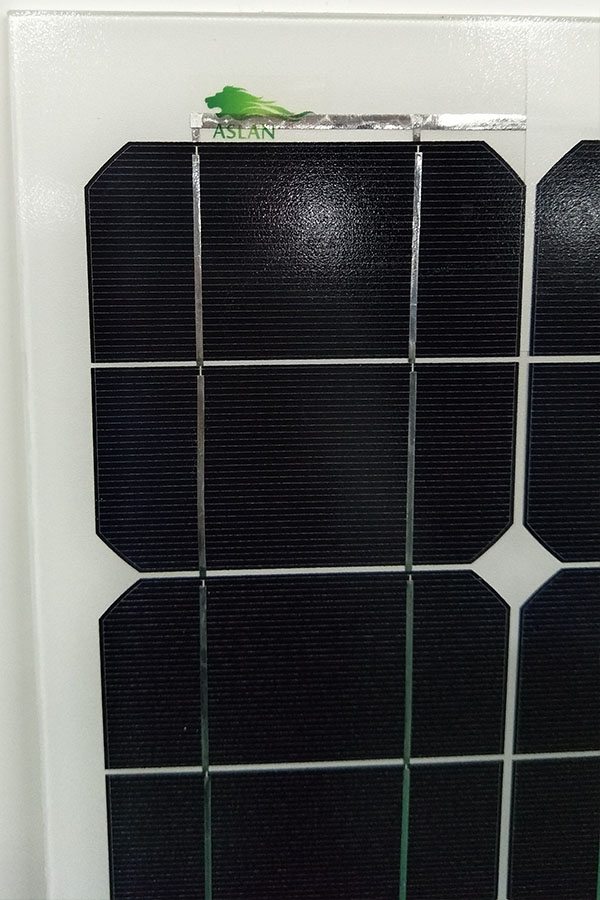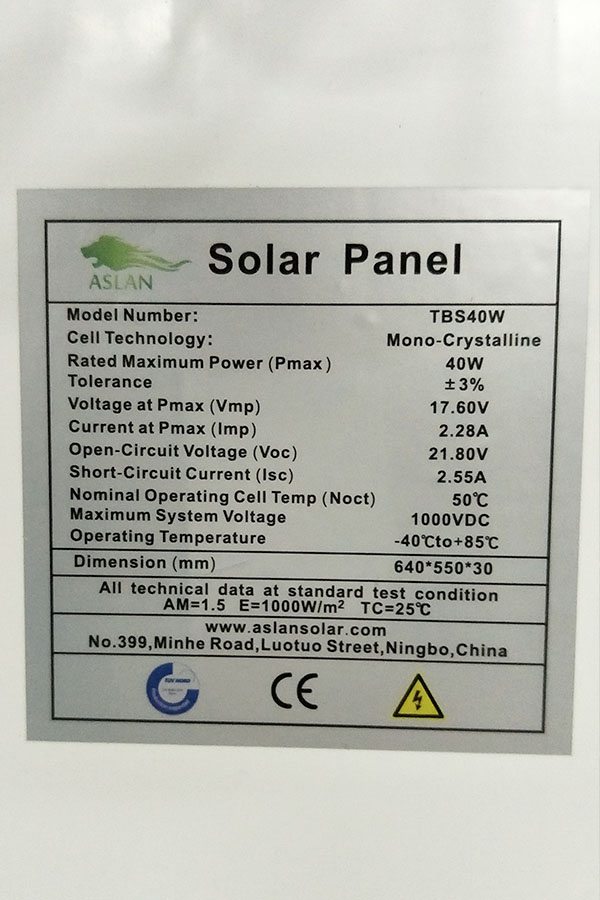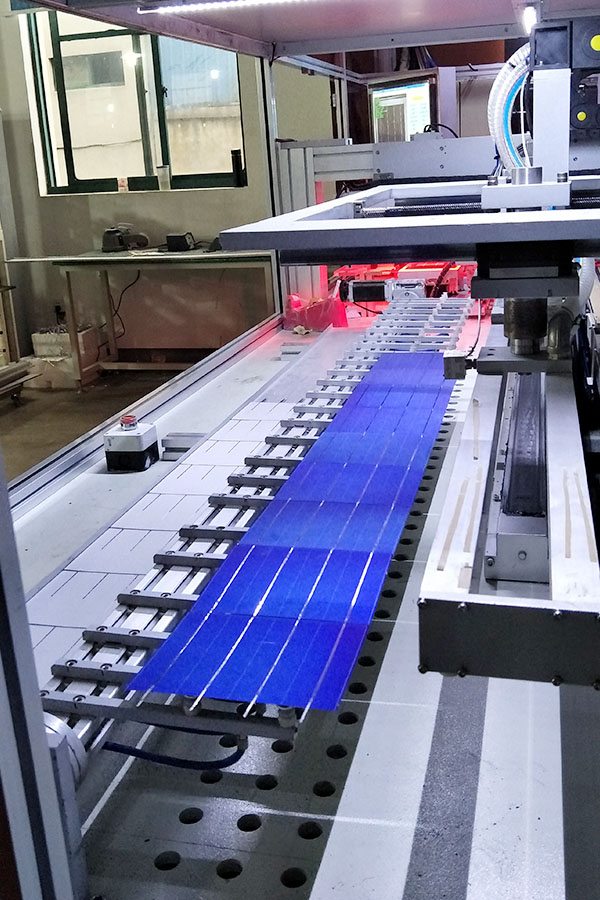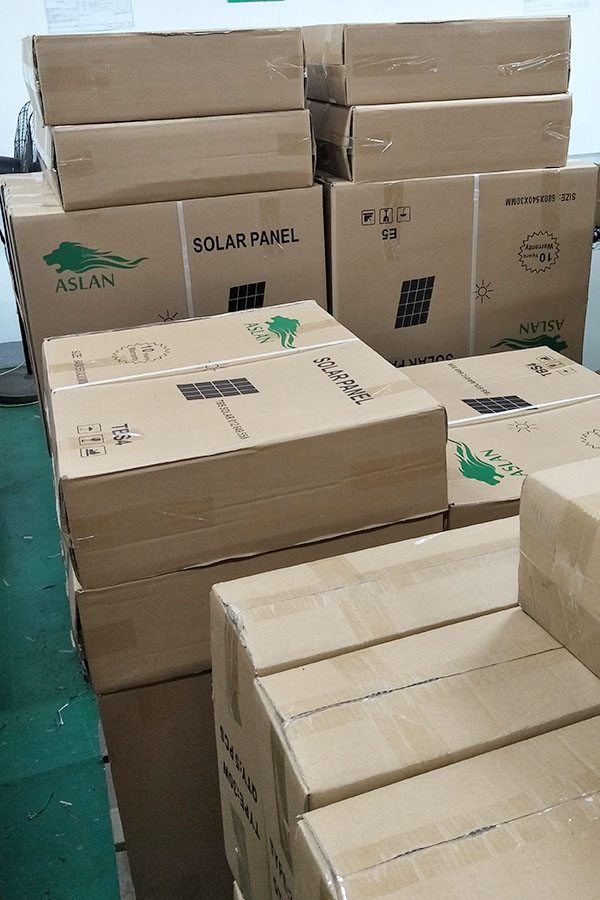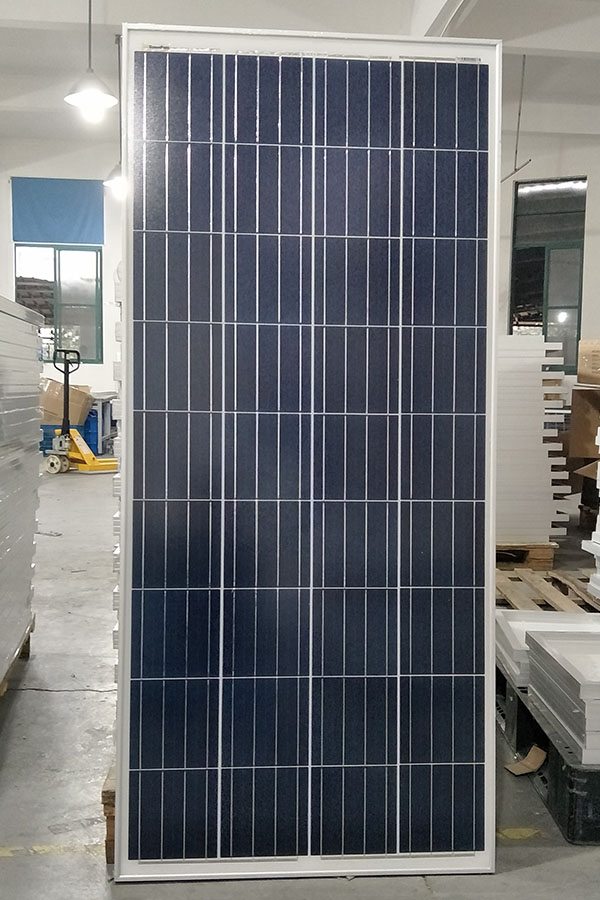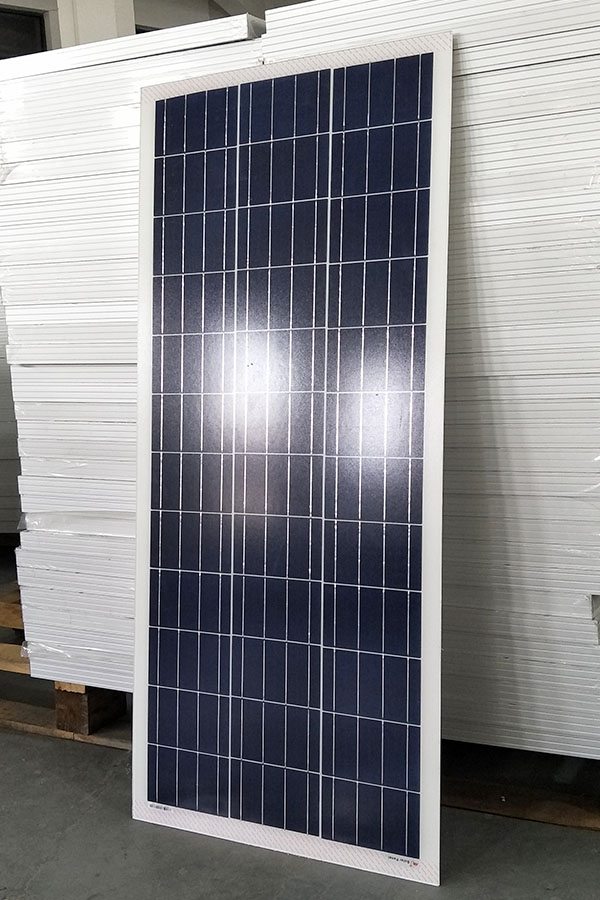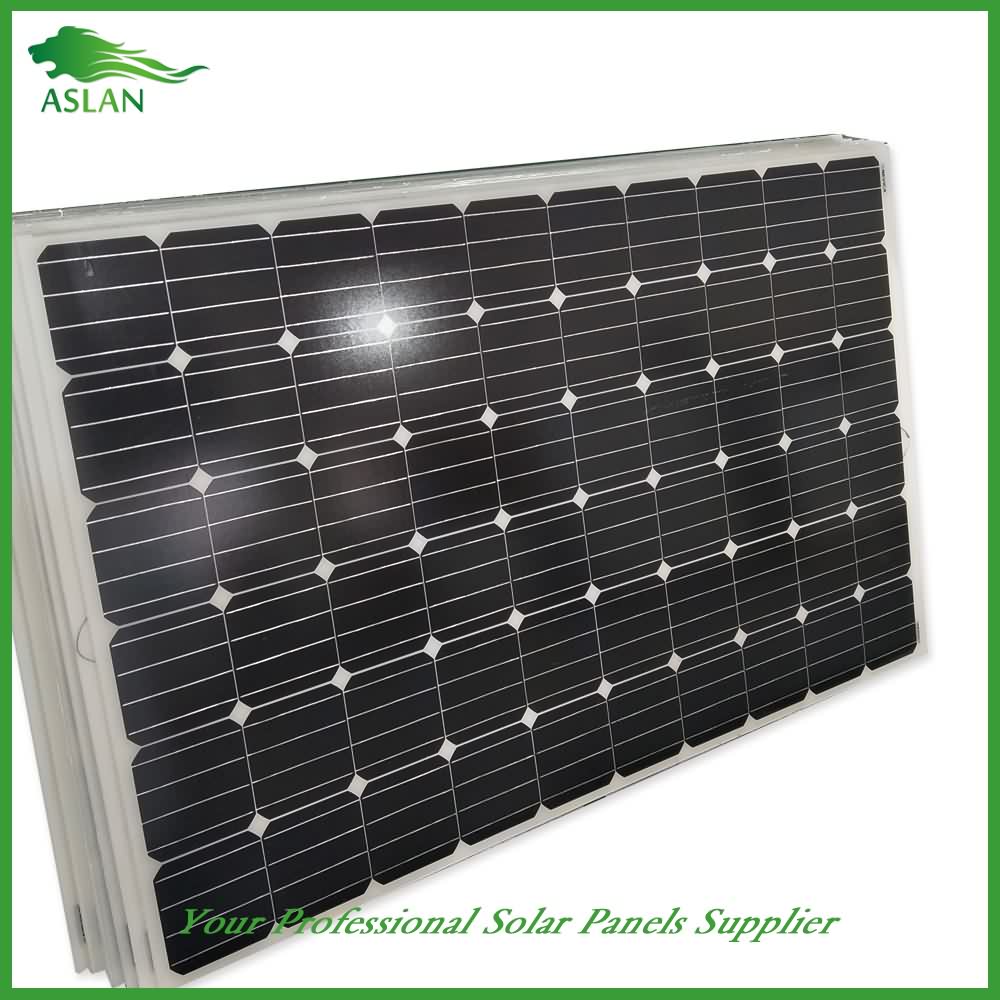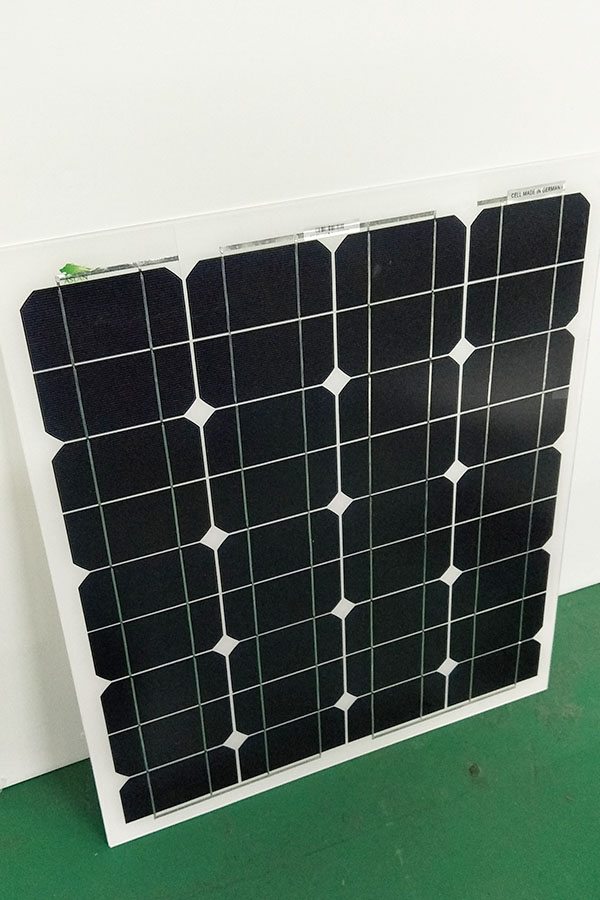Europe style for Mono-Crystalline 30W Solar Panel Wholesale to Peru
Short Description:
We offer great strength in quality and development,merchandising,sales and marketing and operation for Europe style for Mono-Crystalline 30W Solar Panel Wholesale to Peru, items won certifications with the regional and international primary authorities .For far more detailed information,please contact us!
Mono-Crystalline 30W Solar Panel
Technical parameter
Maximum Power(W) 30W
Optimum Power Voltage(Vmp) 17.66V
Optimum Operating Current(Imp) 1.71A
Open Circuit Voltage(Voc) 21.39V
Short Circuit Current(Isc) 1.88A
Mechanical Characteristics
Cell Type Mono-crystalline 125×41.6mm
No of Cell 36 (4x9pcs)
Dimensions 449x554x25mm
Weight 2.8Kg
Front Glass 3.5mm,High Transmission, Low Iron,Tempered Glass
Junction box IP65 Rated
Output Cable TUV 1×4.0mm2/UL12AWG,Length:900mm
Temperature and Coefficients
Operating Temperature(°C): -40°C ~ + 85°C
Maximum System Voltage: 600V(UL)/1000V(IEC) DC
Maximum Rated Current Series: 15A
Temperature Coefficients of Pmax: -0.47%
Temperature Coefficients of Voc: -0.389%
Temperature Coefficients of Isc: 0.057%
Nominal Operationg Cell Temperature (NOCT): 47+/-2°C
Materials of solar panel
1).Solar Cell——Mono-crystalline solar cell 125*41.6mm
2).Front Glass——-3.2mm, high transmission, low iron, tempered glass
3).EVA——-excellent anti-aging EVA
4).TPT——-TPT hot seal made of flame resistance
5).Frame——anodized aluminum profile
6).Junction Box——-IP65 rated, high quality, with diode protection
Superiority: high quality anodized aluminum frame, high efficiency long life, easy installation, strong wind resistance, strong hail resistance.
Features
1. High cell efficiency with quality silicon materials for long term output stability
2. Strictly quality control ensure the stability and reliability, totally 23 QC procedures
3. High transmittance low iron tempered glass with enhanced stiffness and impact resistance
4. Both Poly-crystalline and Mono-crystalline
5. Excellent performance in harsh weather
6. Outstanding electrical performance under high temperature and low irradiance
Quality assurance testing
Thermal cycling test
Thermal shock test
Thermal/Freezing and high humidity cycling test
Electrical isolation test
Hail impact test
Mechanical, wind and twist loading test
Salt mist test
Light and water-exposure test
Moist carbon dioxide/sulphur dioxide
In today’s Crash Course Astronomy, Phil takes a look at the explosive history of our cosmic backyard. We explore how we went from a giant ball of gas to the system of planets and other celestial objects we have today.
This episode is sponsored by Squarespace: http://www.squarespace.com/crashcourse
–
Makeup of a Solar System 2:38
From Gas to a Disc 5:36
Planet Formation Depends on Distance to Sun 7:14
Motion of a System 8:21
–
PBS Digital Studios: http://youtube.com/pbsdigitalstudios
Follow Phil on Twitter: https://twitter.com/badastronomer
Want to find Crash Course elsewhere on the internet?
Facebook – http://www.facebook.com/YouTubeCrashCourse
Twitter – http://www.twitter.com/TheCrashCourse
Tumblr – http://thecrashcourse.tumblr.com
Support CrashCourse on Subbable: http://subbable.com/crashcourse
–
PHOTO/VIDEO CREDITS
Sun: http://www.nasa.gov/sites/default/files/706436main_20121114-304-193blend_m6-orig_full.jpg [credit: NASA/ESA]
Jupiter: http://www.jpl.nasa.gov/images/hubble/20140515/jupiter20140515-full.jpg [credit: NASA/ESA]
Geocentric celestial spheres; Peter Apian’s Cosmographia (Antwerp, 1539): http://en.wikipedia.org/wiki/Celestial_spheres#mediaviewer/File:Ptolemaicsystem-small.png
Ganymede: http://en.wikipedia.org/wiki/File:Noaa_ganymede.jpg
Mercury: http://messenger.jhuapl.edu/gallery/sciencePhotos/pics/CW0131775256F_web.png [credit: NASA/Johns Hopkins University Applied Physics Laboratory/Carnegie Institution of Washington]
Understanding Solar System Dynamics: Orbits and Kepler’s Laws (2008): https://archive.org/details/OrbitsAndKeplersLaws
Mercury: http://apod.nasa.gov/apod/ap080116.html
Venus: http://www.msss.com/all_projects/magellan.php
Earth: http://earthobservatory.nasa.gov/IOTD/view.php?id=36019
Mars: http://nssdc.gsfc.nasa.gov/photo_gallery/photogallery-mars.html
Jupiter: http://www.nasa.gov/mission_pages/cassini/multimedia/pia04866.html
Saturn: http://www.slate.com/content/dam/slate/blogs/bad_astronomy/2014/06/Ten%20Years%20at%20Saturn/cassini_ugarkovic_saturn.jpg.CROP.original-original.jpg [credit: Photo by NASA/JPL/Space Science Institute/Gordan Ugarkovic]
Uranus: http://hubblesite.org/newscenter/archive/releases/1998/35/image/a/
Neptune: http://www.slate.com/blogs/bad_astronomy/2014/05/15/neptune_voyager_images_updated_for_portrait_of_the_eighth_planet.html
http://www.nasa.gov/sites/default/files/hs-2014-29-a-large_web.jpg [credit: JHUAPL/SwRI/Dan Durda]
Bennu’s Journey: http://svs.gsfc.nasa.gov/cgi-bin/details.cgi?aid=20220&button=recent
http://svs.gsfc.nasa.gov/cgi-bin/details.cgi?aid=11541
Artist’s impression of a protoplanetary disk: http://en.wikipedia.org/wiki/Protoplanetary_disk#mediaviewer/File:Artist%E2%80%99s_Impression_of_a_Baby_Star_Still_Surrounded_by_a_Protoplanetary_Disc.jpg
Rocky Ring of Debris Around Vega: http://www.nasa.gov/mission_pages/spitzer/multimedia/pia16610.html [image credit: NASA/JPL-Caltech]
Proplyds in the Orion Nebula: http://www.esa.int/Our_Activities/Space_Science/Born_in_beauty_proplyds_in_the_Orion_Nebula
The Virtual Tour for the property at 5740 Linda Drive, Watauga, TX 76148 selling for $250,000: http://www.propertypanorama.com/instaview-tour/ntreis/13631803 Other homes for sale by Manuel Lopez of Bransom Real Estate: http://www.propertypanorama.com/all-tours/737551 Beautiful 2 story 5 bedroom 2.5 bath located in the middle of town. Perfect for a large or extended family. Large dining and kitchen area. 2 living rooms and a spacious back yard with an above ground pool. The pool has a new pump and the upstairs 4 ton unit is new. The house also includes solar panels on the roof. This makes the electricity bill very cost effective. Contract of the solar panels transfer with the sale of the property.
